Abstract
A retrospective cohort study was carried out in 1982–1983 among 28,460 benzene-exposed workers (15,643 males, 12,817 females) from 233 factories and 28,257 control workers (16,621 males, 12,366 females) from 83 factories in 12 large cities in China. All-cause mortality was significantly higher among the exposed (265.46/100,000 person-years) than among the unexposed (139.06/100,000 person-years), as was mortality from all malignant neoplasms (123.21/100,000 versus 54.7/100,000, respectively). For certain cancers, increased mortality was noted among benzene-exposed males in comparison with that among unexposed males; the standardized mortality ratios (SMR) were elevated for leukemia (SMR = 5.74), lung cancer (SMR = 2.31), primary hepatocarcinoma (SMR = 1.12), and stomach cancer (SMR = 1.22). For females only leukemia occurred in excess among the exposed. Risk of leukemia rose as duration to exposure to benzene increased up to 15 years, and then declined with additional years of exposure. Leukemia occurred among some workers with as little as 6 to 10 ppm average exposure and 50 ppm-years (or possibly less) cumulative lifetime exposure (based on all available measurements for the exposed work units). Among the 30 leukemia cases identified in the exposed cohort, the proportion of subjects with acute lymphocytic leukemia was substantially lower and the proportion with acute nonlymphocytic leukemias was higher than in the general population. During 1972 to 1981, the annual incidence of leukemia ranged from 5.83 to 28.33 per 100,000 with higher rates occurring in the interval 1977 to 1981 than in the earlier years of the study period. Future studies should evaluate more precisely the relationship between exposure levels, job title, and development of leukemia among cases and noncases within the exposed cohort.
Full text
PDF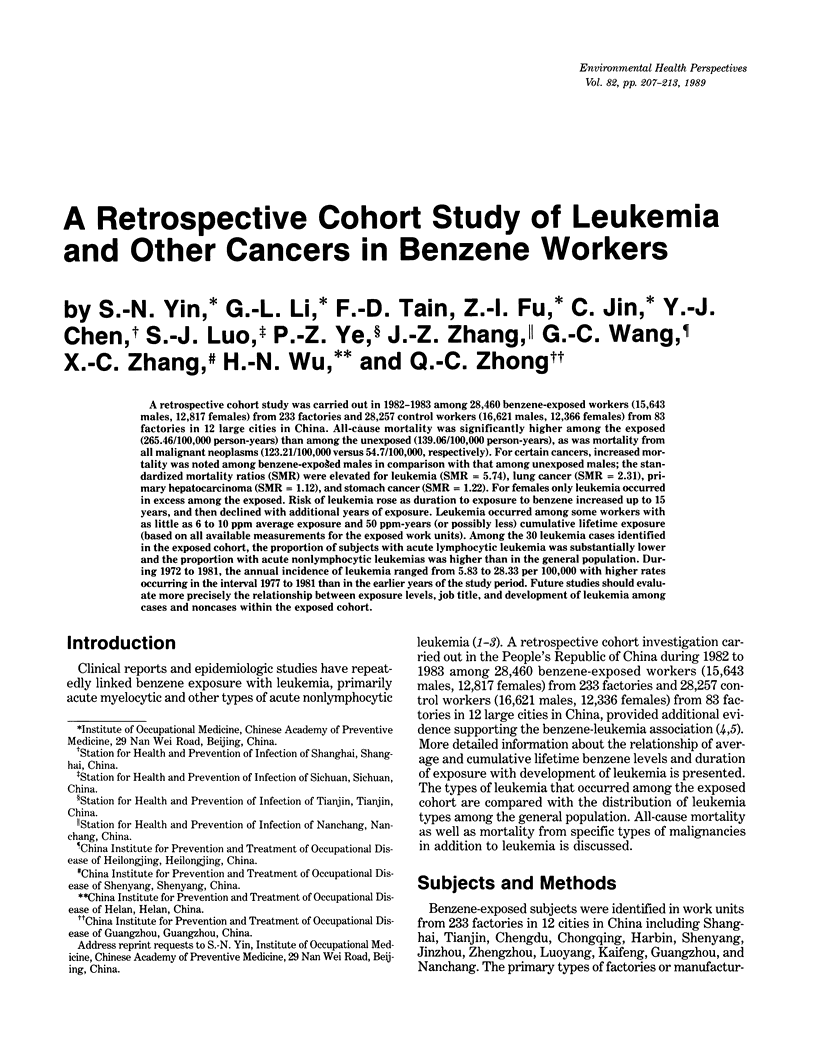
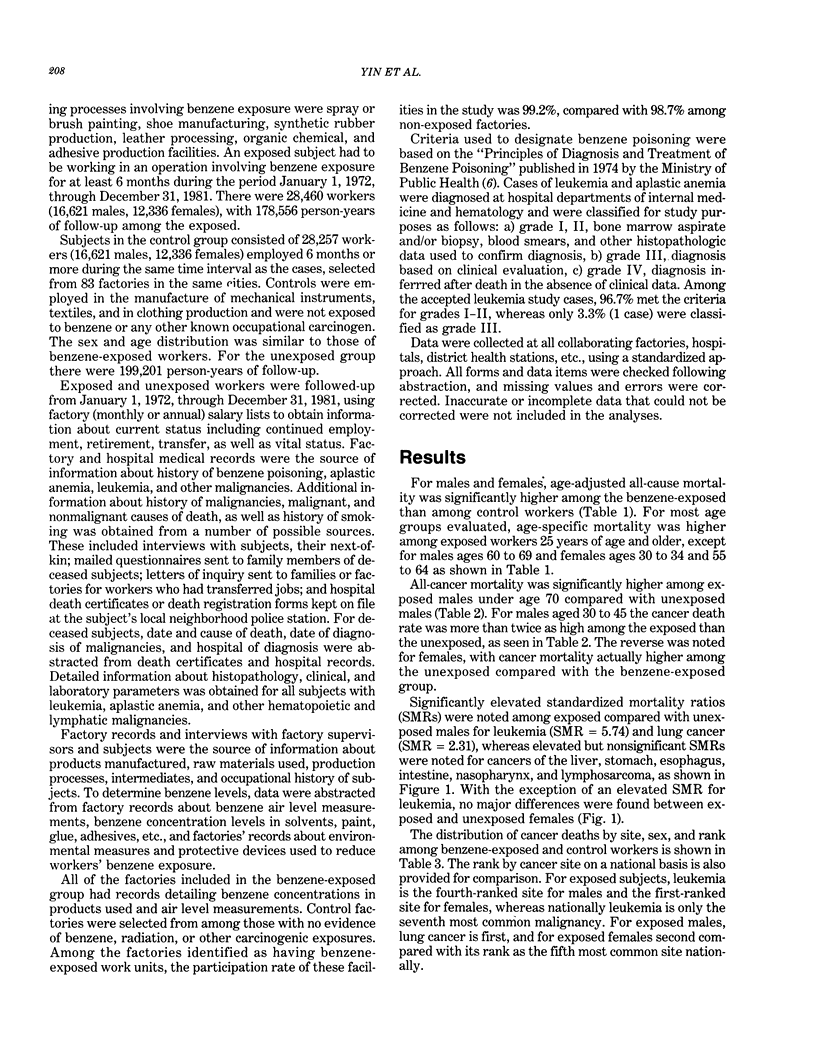
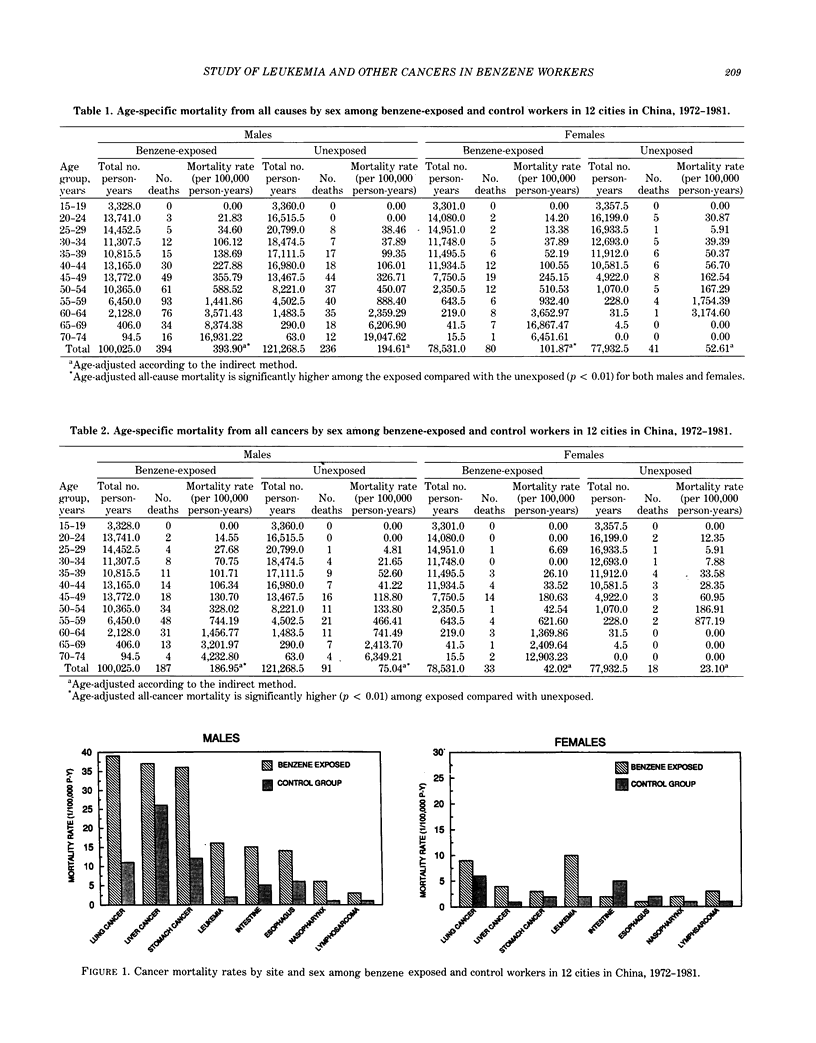
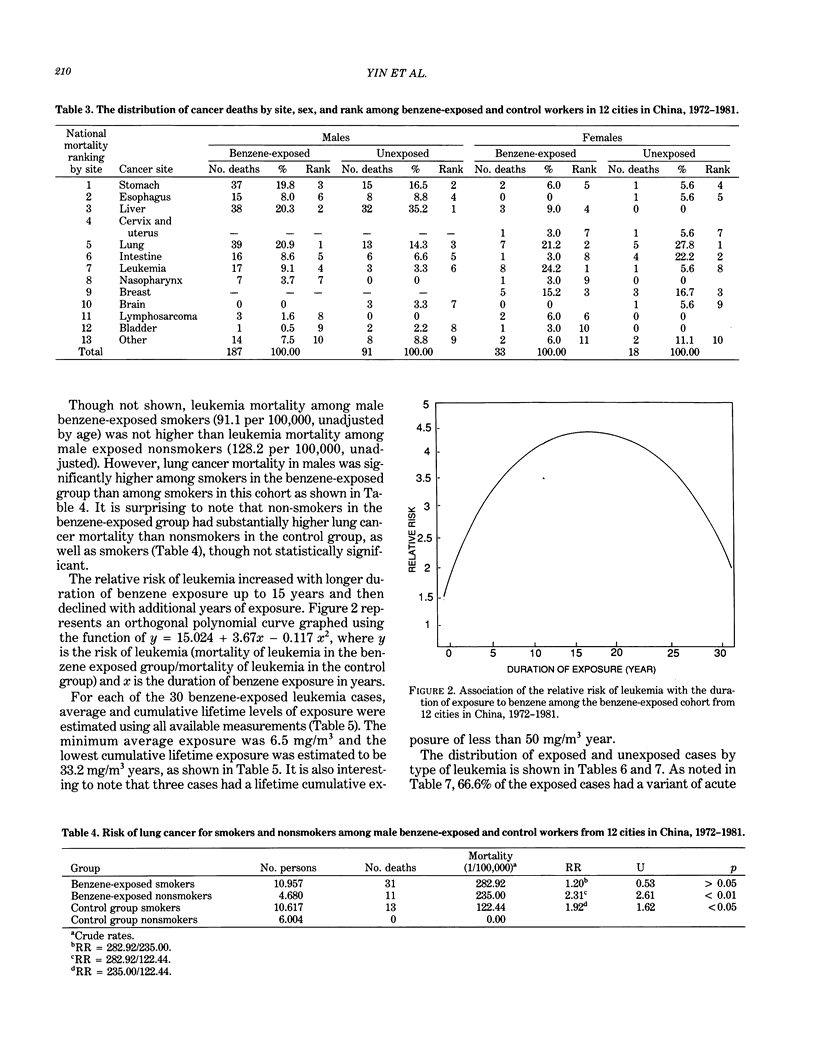
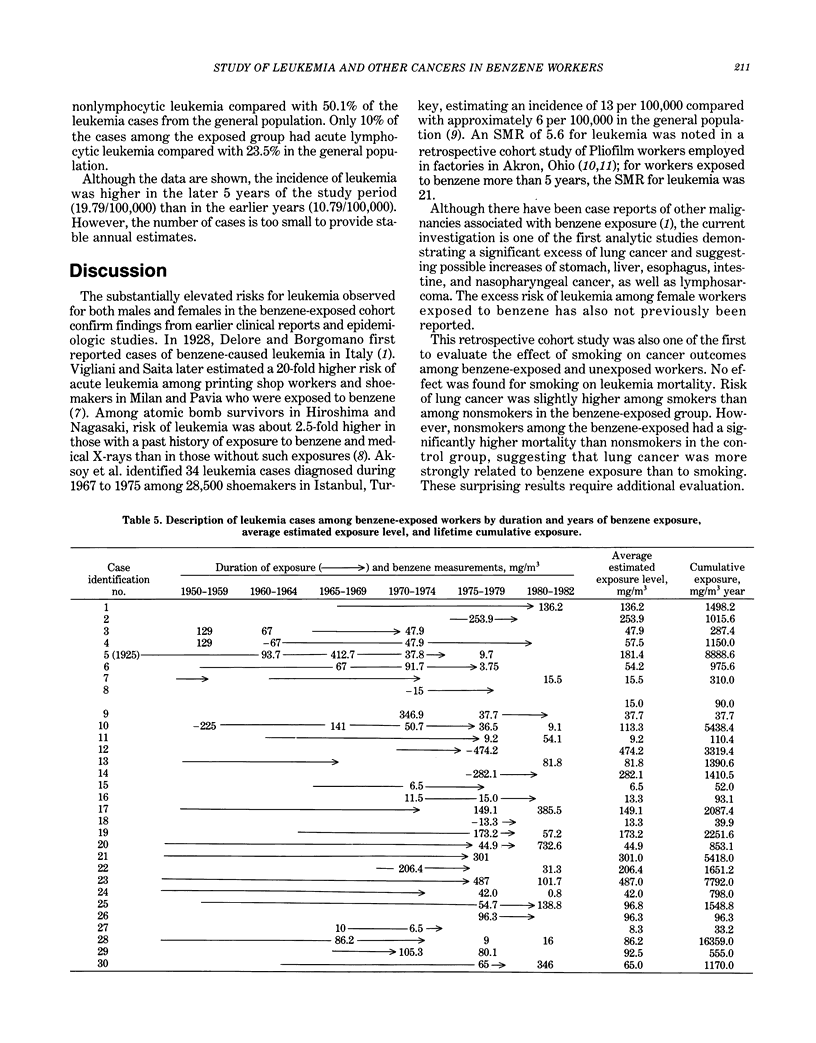

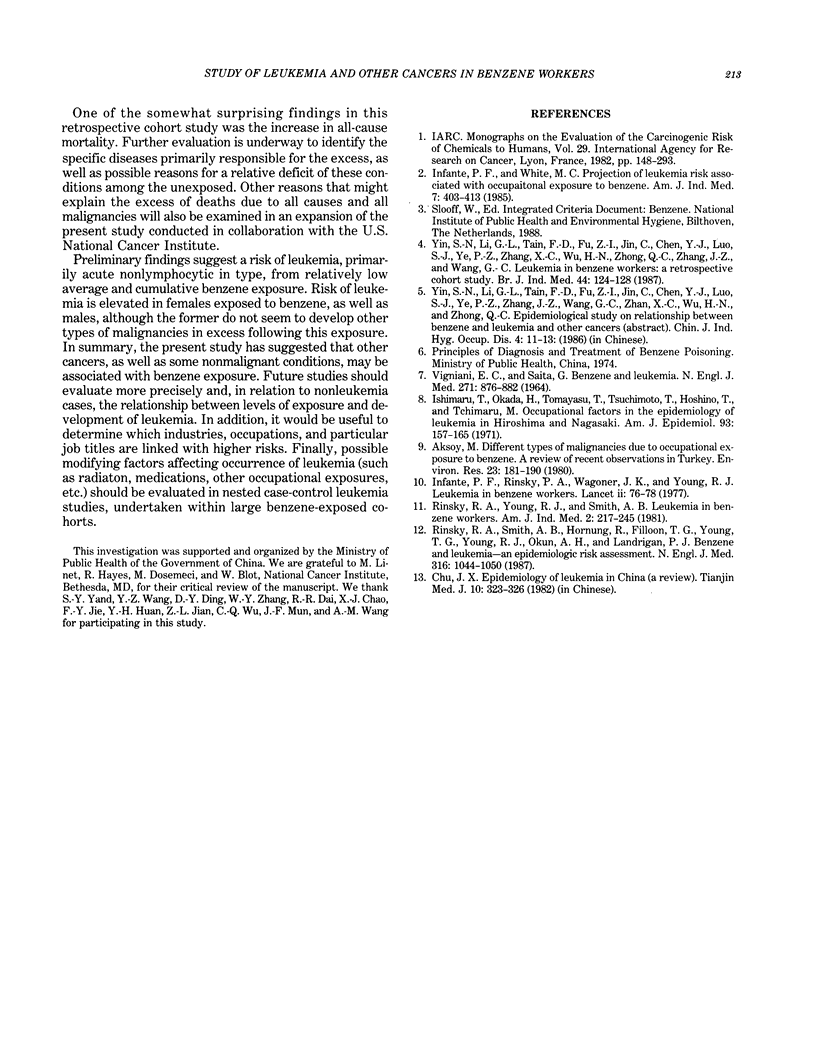
Selected References
These references are in PubMed. This may not be the complete list of references from this article.
- Aksoy M. Different types of malignancies due to occupational exposure to benzene: a review of recent observations in Turkey. Environ Res. 1980 Oct;23(1):181–190. doi: 10.1016/0013-9351(80)90104-8. [DOI] [PubMed] [Google Scholar]
- Infante P. F., Rinsky R. A., Wagoner J. K., Young R. J. Leukaemia in benzene workers. Lancet. 1977 Jul 9;2(8028):76–78. doi: 10.1016/s0140-6736(77)90074-5. [DOI] [PubMed] [Google Scholar]
- Infante P. F., White M. C. Projections of leukemia risk associated with occupational exposure to benzene. Am J Ind Med. 1985;7(5-6):403–413. doi: 10.1002/ajim.4700070507. [DOI] [PubMed] [Google Scholar]
- Ishimaru T., Okada H., Tomiyasu T., Tsuchimoto T., Hoshino T., Ichimaru M. Occupational factors in the epidemiology of leukemia in Hiroshima and Nagasaki. Am J Epidemiol. 1971 Mar;93(3):157–165. doi: 10.1093/oxfordjournals.aje.a121242. [DOI] [PubMed] [Google Scholar]
- Rinsky R. A., Smith A. B., Hornung R., Filloon T. G., Young R. J., Okun A. H., Landrigan P. J. Benzene and leukemia. An epidemiologic risk assessment. N Engl J Med. 1987 Apr 23;316(17):1044–1050. doi: 10.1056/NEJM198704233161702. [DOI] [PubMed] [Google Scholar]
- Rinsky R. A., Young R. J., Smith A. B. Leukemia in benzene workers. Am J Ind Med. 1981;2(3):217–245. doi: 10.1002/ajim.4700020305. [DOI] [PubMed] [Google Scholar]
- Yin S. N., Li G. L., Tain F. D., Fu Z. I., Jin C., Chen Y. J., Luo S. J., Ye P. Z., Zhang J. Z., Wang G. C. Leukaemia in benzene workers: a retrospective cohort study. Br J Ind Med. 1987 Feb;44(2):124–128. doi: 10.1136/oem.44.2.124. [DOI] [PMC free article] [PubMed] [Google Scholar]


